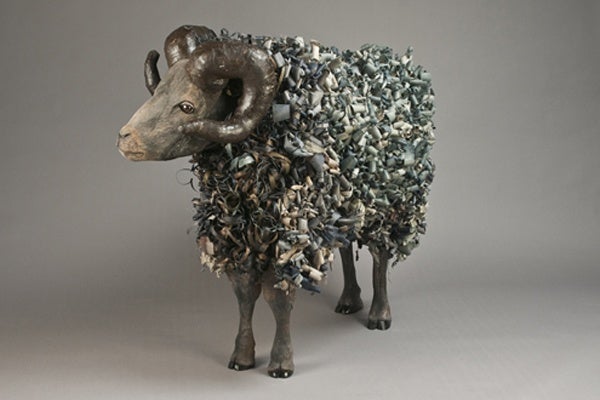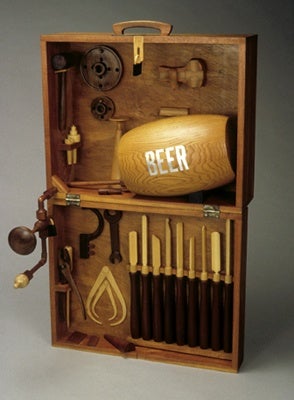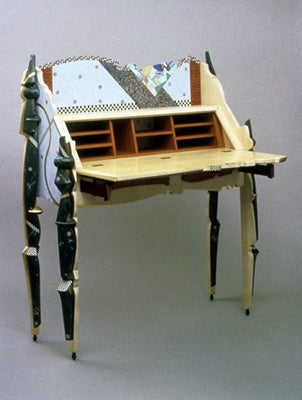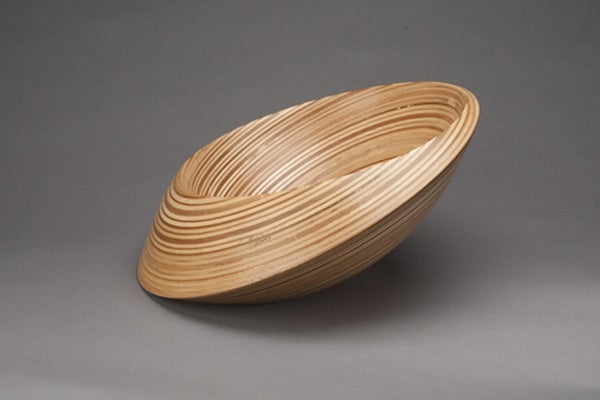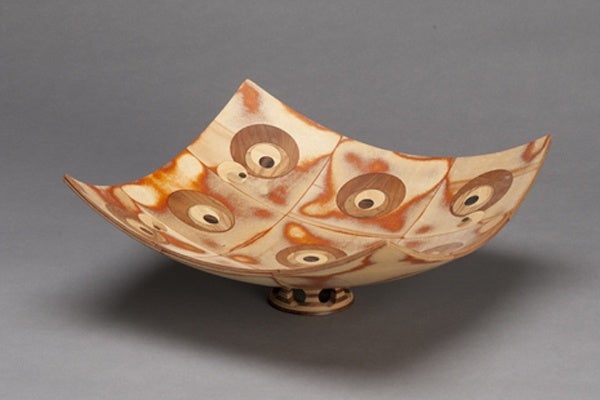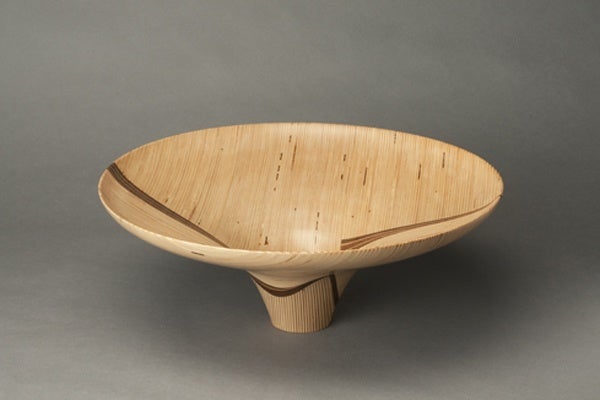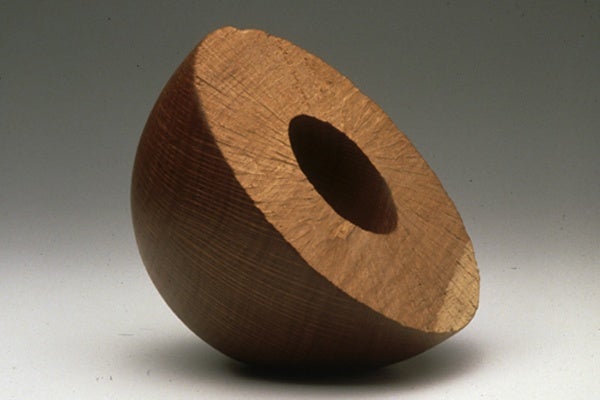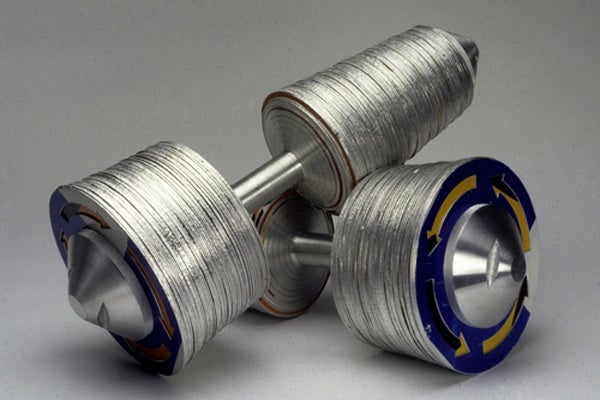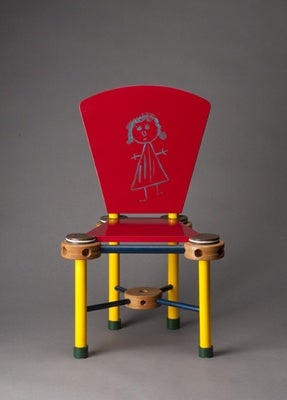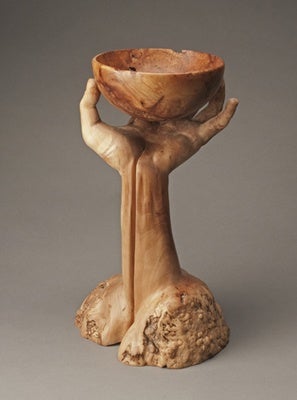Turning humble plywood into art in Philadelphia
For the past 25 years, the Wood Turning Center in Philadelphia quietly has been bringing artists from around the world to work with wood. The center is internationally known for its museum-quality collection of sculptures, vessels and objects.
Their display in a crammed basement meant few people could see them. The original space on Fifth and Race Streets was literally bursting at the seams–but no more. Friday, it opens its doors in a new location in the heart of Old City, reborn as the Center for Art in Wood.
As far as wood goes, plywood doesn’t get too much respect. It’s utilitarian, rather plain, splinter-prone and ugly. But in the hands of artist Rèmi Verchot, it can become a delicate vessel with intricate patterns born out of the layers. That juxtaposition of common materials and uncommon craftsmanship has given Gerard Brown, associate professor at Temple University’s Tyler School of Art, a new appreciation for the versatility of wood art.
“It was really amazing to see a material that is pretty cruddy that we usually take for granted, work though a number of different iterations and ideas to become something really transformed,” said Brown, the curator of the first exhibit at the new center.
The plywood pieces are only a few of the 100 objects displayed in the center’s new ample gallery. They range from polished and elegant wooden bowls and complex sculptures to rather jarring objects made of wood distressed by nature or by tools such as lathes. They’re the heavy machinery that rotate wood blocks to allow for cutting and sanding and shaping by the woodworker. Often used to make balustrades or table legs, they can also create art.
It starts with the wood
It all starts, says Albert Le Coff, the founder of the center, with the wood itself and how the artist approaches it.
“Artists see beauty and life in a material that is actually alive,” he said. “When it’s sitting on the ground or on a tree, you don’t usually see beyond the bark, which is also beautiful. But once you cut into the tree, when you first cut it, there’s the freshness of that grain and every slice is different because it’s a living organism.
“So an artist who utilizes wood on a regular basis gets to understand the growth of the tree,” Le Coff said. “It’s always like cutting a gem; it’s always a unique piece of wood that’s exposed.”
In 1987, Le Coff, an artist himself, decided to create a space where the beauty and versatility of turned-wood art would have a place to be seen, taught, documented and explored. National and international wood artists are paired with writers and photographers through yearly residencies. Those have fostered lively debates and challenges that have kept the art form on the cutting edge.
To make a sculpture of a ram, Le Coff says one participant used wood shavings that normally would end up in the trash.
“The coat of the ram is made from shavings,” said Le Coff. “This is Daniel Hoffman, a Philadelphia artist, who is a resident. It’s the first time they turned and carved wood so the head of the ram and feet are all hand carved.”
“The wood is just the recipient of the actions that are taken on by the artist,” Brown said. “Some artists almost seem to call out of the wood a form that’s hidden inside of it, caressing it out through sanding and carving.
Other artists, said Brown, “hack away at it and the wood can really stand up to that. I found that very interesting.”
“We believe that we are the only institution in the world that is dedicated 24-7 to the field of wood turning–now wood art,” said Le Coff. “So we focus on this art, with four to five major exhibitions a year, our permanent collection of objects and our research library.”
The Center for Art in Wood is not just the product of the passion and vision of Albert Le Coff; its location in Philadelphia is linked to the city’s rich industrial history. In fact, at the opposite side of the block, on Wood Street between Second and Third streets, is one of the oldest and most renowned wood-turning centers in the country. Started in 1863 by legendary master woodworker John Grass, the workshop is still in operation.
WHYY is your source for fact-based, in-depth journalism and information. As a nonprofit organization, we rely on financial support from readers like you. Please give today.


